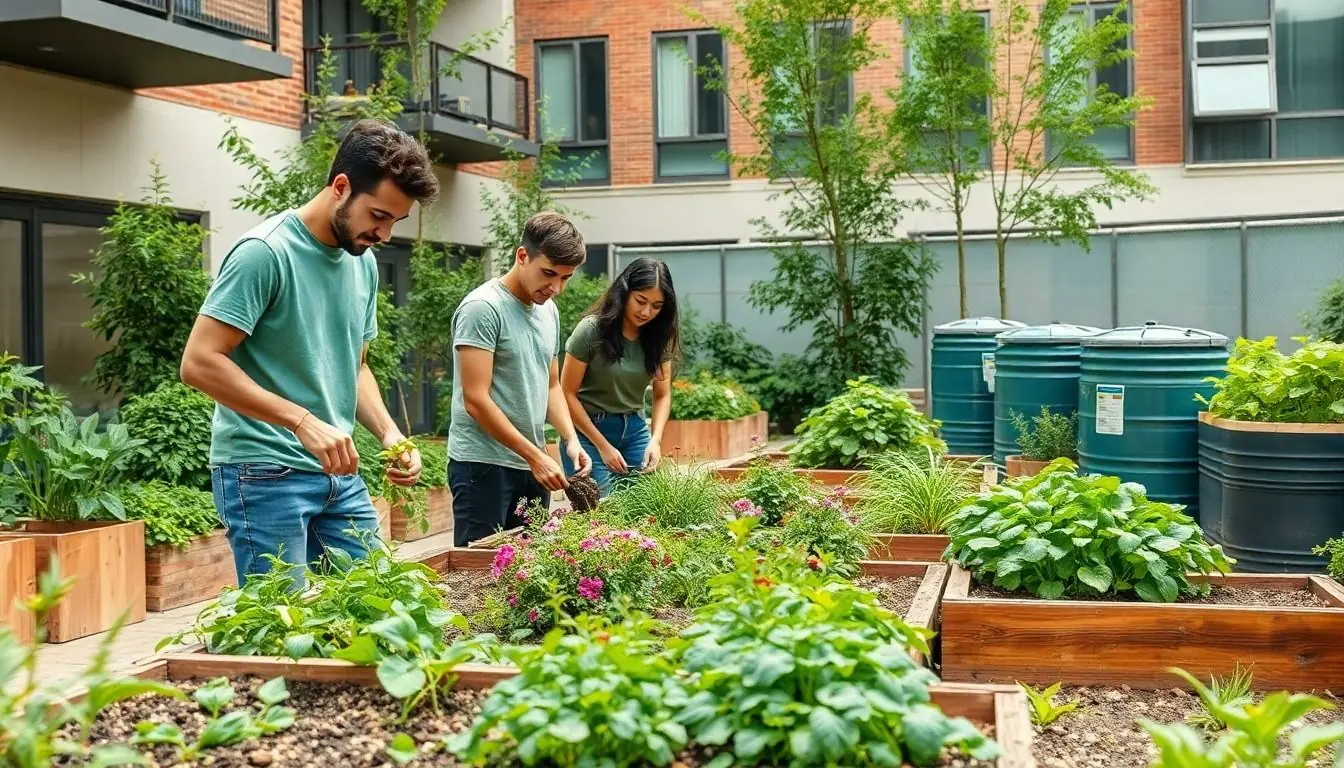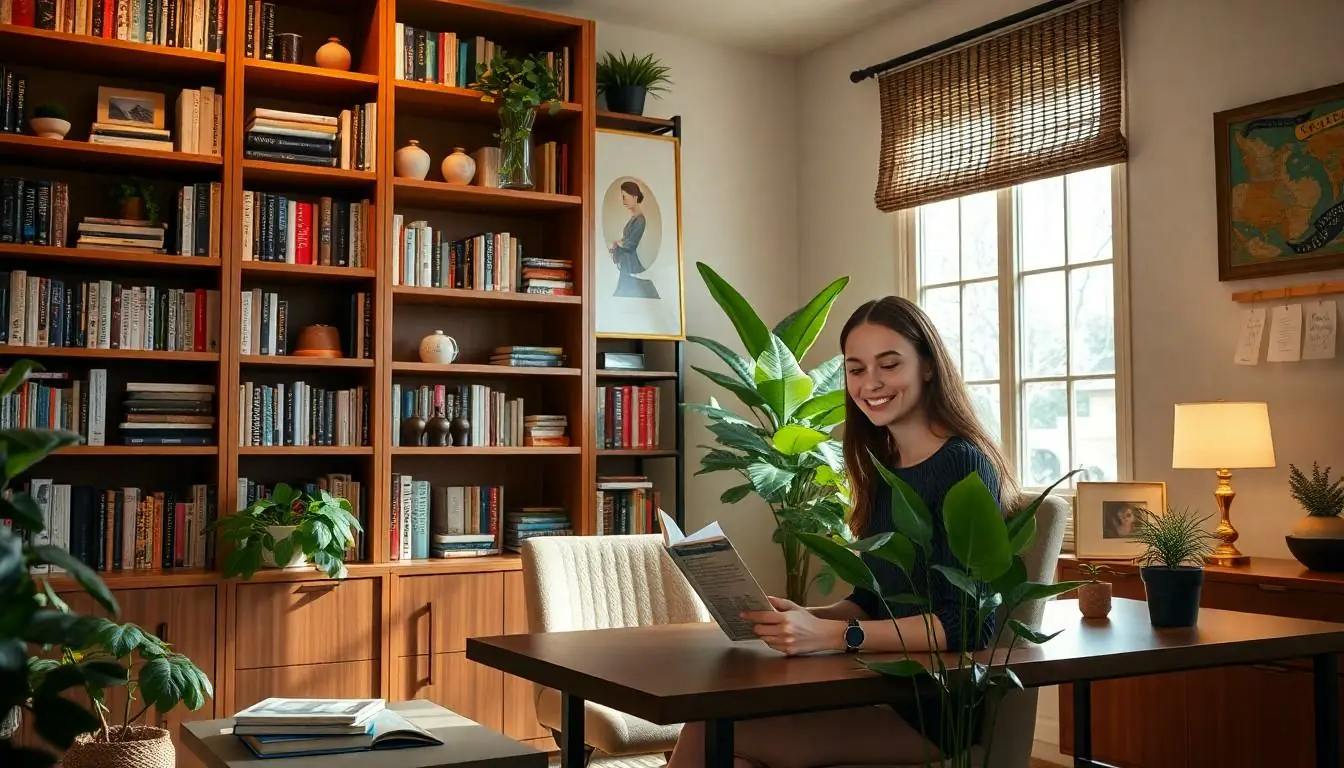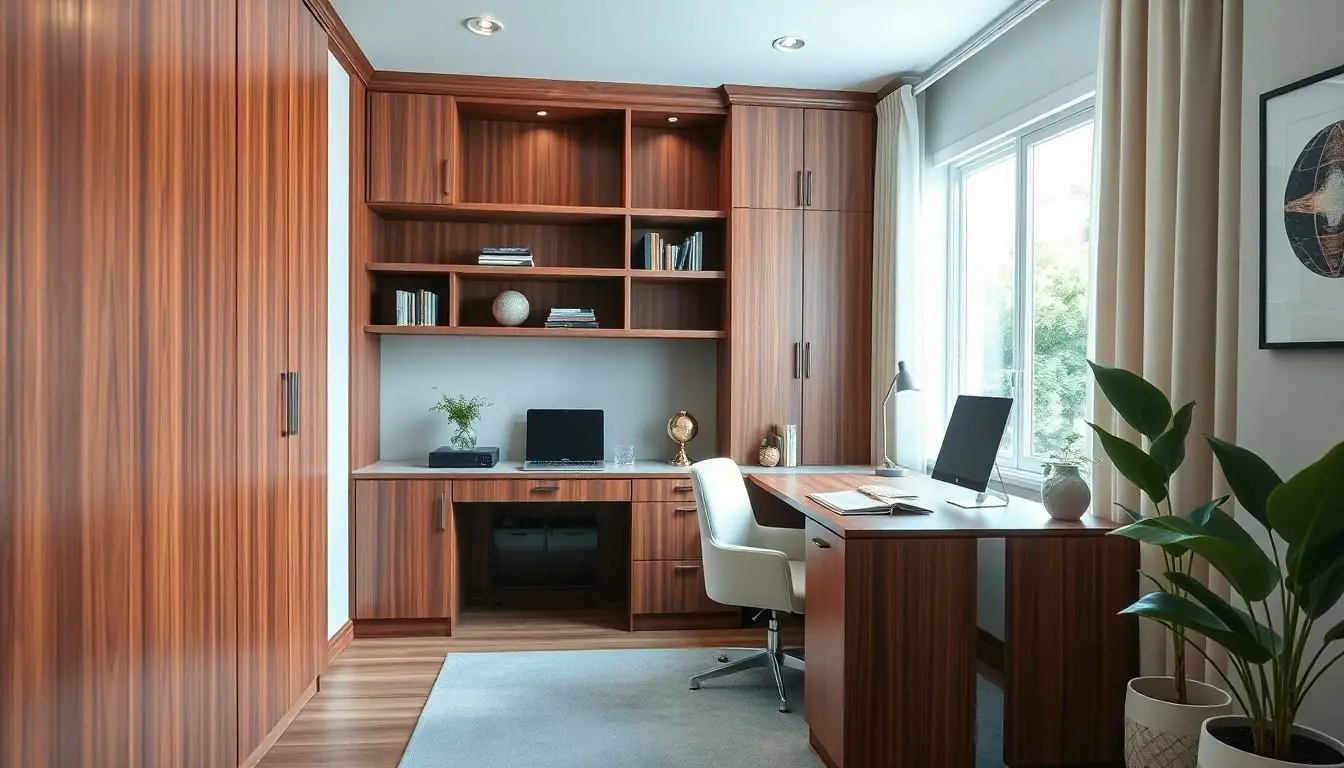Table of Contents
ToggleIn a world where the planet’s health is hanging by a thread, sustainable apartment living isn’t just a trend—it’s a necessity. Imagine sipping your morning coffee while knowing you’re reducing your carbon footprint and saving the Earth, one recycled bottle at a time. Who knew eco-friendly could be this chic?
Understanding Sustainable Apartment Living
Sustainable apartment living promotes eco-friendly practices within residential spaces. It plays a vital role in mitigating environmental challenges while enhancing quality of life.
Definition and Importance
Sustainable apartment living incorporates strategies and practices aimed at minimizing environmental impact. This lifestyle emphasizes energy efficiency, waste reduction, and resource conservation. Importance lies in its potential to lower carbon footprints significantly. Adopting these practices leads to healthier living environments and promotes long-term sustainability. Individuals and communities contribute to combating climate change by embracing sustainable choices.
Key Principles
Key principles of sustainable apartment living focus on resource efficiency, waste management, and environmental stewardship. Energy conservation entails using energy-efficient appliances and renewable energy sources. Water conservation involves minimizing usage and implementing rainwater harvesting systems. Waste management encourages recycling and composting to reduce landfill contributions. Community engagement fosters collaboration among residents to share resources and ideas. Together, these principles create a harmonious balance between comfortable living and ecological responsibility.
Benefits of Sustainable Apartment Living

Sustainable apartment living offers numerous benefits. Residents can enjoy both environmental and economic advantages while contributing to a healthier planet.
Environmental Advantages
Sustainable apartment living significantly reduces carbon footprints. Recycling programs minimize waste, while energy-efficient appliances lower energy consumption. Water conservation practices, like rainwater harvesting, help to preserve resources. Composting organic waste enriches soil and reduces landfill loads. Native landscaping improves biodiversity, making urban environments greener. Overall, these practices promote healthier ecosystems and mitigate climate change impacts.
Economic Savings
Residents benefit from lower utility bills through energy-efficient strategies. Investing in efficient appliances reduces electricity expenses and prolongs their lifespan. Water-saving fixtures also cut costs associated with water usage. Participating in community-sharing programs leads to reduced purchasing needs for shared tools and amenities. Local food systems, such as farmers’ markets, provide fresh produce at lower prices. These economic advantages enhance residents’ financial stability while supporting sustainable growth.
Features of Sustainable Apartments
Sustainable apartments incorporate various eco-friendly elements designed to minimize environmental impact. These features enhance energy efficiency, conserve water, and use sustainable materials throughout their construction and operation.
Energy Efficiency
Energy-efficient appliances and systems reduce energy consumption significantly. LED lighting consumes up to 75% less energy compared to traditional bulbs. Furthermore, proper insulation and smart thermostats maintain comfortable temperatures, decimating heating and cooling costs. In addition, energy-efficient windows minimize heat transfer, enhancing comfort and decreasing energy bills. By integrating renewable energy sources, such as solar panels, residents can produce their own electricity, further decreasing reliance on fossil fuels.
Water Conservation
Water-saving fixtures play a crucial role in promoting conservation. Low-flow faucets and showerheads can reduce water usage by up to 50%. Rainwater harvesting systems collect rainwater for irrigation and non-potable uses, providing a sustainable water source. Moreover, native landscaping requires less irrigation, minimizing the strain on local water resources. Efficient appliances like washing machines can save considerable amounts of water while maintaining performance. Implementing these strategies results in significant reductions in overall water consumption.
Sustainable Materials
Sustainable apartments prioritize the use of eco-friendly materials throughout construction. Recycled or reclaimed wood, for instance, lessens the demand for new timber resources. Additionally, low-VOC paints and finishes promote healthier indoor air quality by reducing harmful emissions. Bamboo flooring serves as another sustainable option, standing out for its rapid growth and durability. Choosing materials that are locally sourced minimizes transportation emissions and supports local economies. These choices contribute to a smaller carbon footprint while creating beautiful and functional living spaces.
Challenges of Sustainable Apartment Living
Sustainable apartment living presents various challenges that residents must navigate. Awareness of these hurdles can guide individuals towards effective solutions.
Initial Costs
Investing in sustainable practices often incurs higher upfront expenses. Energy-efficient appliances, while cost-effective over time, come with a significant price tag. Water-saving fixtures typically feature initial costs that discourage many renters. Renovations to achieve sustainability can also strain budgets, especially if comprehensive upgrades are necessary. Financial incentives exist, yet the complexity of accessing these programs may deter some occupants. Awareness, careful planning, and long-term savings calculations often assist in making informed decisions.
Limited Space
Living in an apartment limits space for implementing extensive sustainable practices. Smaller areas restrict opportunities for traditional gardening or composting setups. Many residents find it challenging to store equipment, diverse recycling materials, or repurposed goods. Limited outdoor spaces hinder initiatives like rainwater harvesting, reducing conservation efforts. Sharing resources with neighbors can alleviate some constraints, yet collaboration requires coordination and communication. Adaptation and creativity are essential for overcoming these limitations while pursuing sustainable apartment living.
Sustainable apartment living offers a pathway to a healthier planet and a more fulfilling lifestyle. By embracing eco-friendly practices residents can significantly reduce their carbon footprints while enjoying economic benefits. The integration of energy-efficient appliances and water-saving fixtures not only enhances living conditions but also fosters a sense of community.
Facing challenges is part of the journey toward sustainability. With creativity and collaboration residents can overcome barriers and make impactful changes. Ultimately, sustainable living isn’t just about individual choices; it’s about building a collective effort that promotes a brighter future for everyone. Adopting these practices leads to a more sustainable lifestyle that benefits both individuals and the environment.







